
Perception is the organization, identification, and interpretation of sensory information in order to represent and understand the presented information or environment. All perception involves signals that go through the nervous system, which in turn result from physical or chemical stimulation of the sensory system. Vision involves light striking the retina of the eye; smell is mediated by odor molecules; and hearing involves pressure waves.
An illusion is a distortion of the senses, which can reveal how the mind normally organizes and interprets sensory stimulation. Although illusions distort the human perception of reality, they are generally shared by most people.

In visual perception, an optical illusion is an illusion caused by the visual system and characterized by a visual percept that arguably appears to differ from reality. Illusions come in a wide variety; their categorization is difficult because the underlying cause is often not clear but a classification proposed by Richard Gregory is useful as an orientation. According to that, there are three main classes: physical, physiological, and cognitive illusions, and in each class there are four kinds: Ambiguities, distortions, paradoxes, and fictions. A classical example for a physical distortion would be the apparent bending of a stick half immerged in water; an example for a physiological paradox is the motion aftereffect. An example for a physiological fiction is an afterimage. Three typical cognitive distortions are the Ponzo, Poggendorff, and Müller-Lyer illusion. Physical illusions are caused by the physical environment, e.g. by the optical properties of water. Physiological illusions arise in the eye or the visual pathway, e.g. from the effects of excessive stimulation of a specific receptor type. Cognitive visual illusions are the result of unconscious inferences and are perhaps those most widely known.

Forced perspective is a technique that employs optical illusion to make an object appear farther away, closer, larger or smaller than it actually is. It manipulates human visual perception through the use of scaled objects and the correlation between them and the vantage point of the spectator or camera. It has uses in photography, filmmaking and architecture.

Depth perception is the ability to perceive distance to objects in the world using the visual system and visual perception. It is a major factor in perceiving the world in three dimensions. Depth perception happens primarily due to stereopsis and accommodation of the eye.
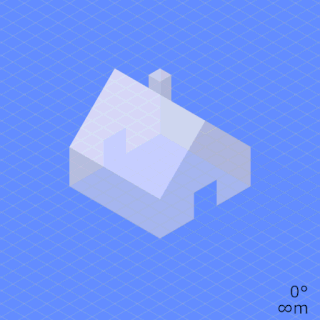
In photography and cinematography, perspective distortion is a warping or transformation of an object and its surrounding area that differs significantly from what the object would look like with a normal focal length, due to the relative scale of nearby and distant features. Perspective distortion is determined by the relative distances at which the image is captured and viewed, and is due to the angle of view of the image being either wider or narrower than the angle of view at which the image is viewed, hence the apparent relative distances differing from what is expected. Related to this concept is axial magnification -- the perceived depth of objects at a given magnification.

An autostereogram is a two-dimensional (2D) image that can create the optical illusion of a three-dimensional (3D) scene. Autostereograms use only one image to accomplish the effect while normal stereograms require two. The 3D scene in an autostereogram is often unrecognizable until it is viewed properly, unlike typical stereograms. Viewing any kind of stereogram properly may cause the viewer to experience vergence-accommodation conflict.

Ambiguous images or reversible figures are visual forms that create ambiguity by exploiting graphical similarities and other properties of visual system interpretation between two or more distinct image forms. These are famous for inducing the phenomenon of multistable perception. Multistable perception is the occurrence of an image being able to provide multiple, although stable, perceptions.

An Ames room is a distorted room that creates an optical illusion. Likely influenced by the writings of Hermann Helmholtz, it was invented by American scientist Adelbert Ames Jr. in 1946, and constructed in the following year.
Gradient in vector calculus is a vector field representing the maximum rate of increase of a scalar field or a multivariate function and the direction of this maximal rate.
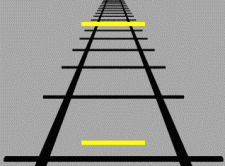
The Ponzo illusion is a geometrical-optical illusion that was first demonstrated by the Italian psychologist Mario Ponzo (1882–1960) in 1911. He suggested that the human mind judges an object's size based on its background. He showed this by drawing two identical lines across a pair of converging lines, similar to railway tracks. The upper line looks longer because we interpret the converging sides according to linear perspective as parallel lines receding into the distance. In this context, we interpret the upper line as though it were farther away, so we see it as longer – a farther object would have to be longer than a nearer one for both to produce retinal images of the same size.
Geons are the simple 2D or 3D forms such as cylinders, bricks, wedges, cones, circles and rectangles corresponding to the simple parts of an object in Biederman's recognition-by-components theory. The theory proposes that the visual input is matched against structural representations of objects in the brain. These structural representations consist of geons and their relations. Only a modest number of geons are assumed. When combined in different relations to each other and coarse metric variation such as aspect ratio and 2D orientation, billions of possible 2- and 3-geon objects can be generated. Two classes of shape-based visual identification that are not done through geon representations, are those involved in: a) distinguishing between similar faces, and b) classifications that don’t have definite boundaries, such as that of bushes or a crumpled garment. Typically, such identifications are not viewpoint-invariant.
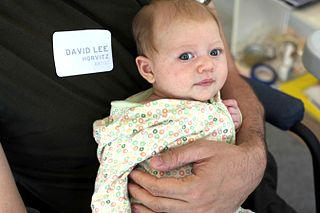
Infant vision concerns the development of visual ability in human infants from birth through the first years of life. The aspects of human vision which develop following birth include visual acuity, tracking, color perception, depth perception, and object recognition.
In humans, monocular vision is vision using only one eye, or using multiple eyes independently of each other. Depth perception in monocular vision is reduced compared to binocular vision, but still is active primarily due to accommodation of the eye and motion parallax. The word monocular comes from the Greek root, mono for single, and the Latin root, oculus for eye.
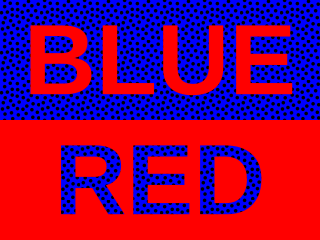
Chromostereopsis is a visual illusion whereby the impression of depth is conveyed in two-dimensional color images, usually of red–blue or red–green colors, but can also be perceived with red–grey or blue–grey images. Such illusions have been reported for over a century and have generally been attributed to some form of chromatic aberration.

Visual perception is the ability to interpret the surrounding environment through photopic vision, color vision, scotopic vision, and mesopic vision, using light in the visible spectrum reflected by objects in the environment. This is different from visual acuity, which refers to how clearly a person sees. A person can have problems with visual perceptual processing even if they have 20/20 vision.
Haptic memory is the form of sensory memory specific to touch stimuli. Haptic memory is used regularly when assessing the necessary forces for gripping and interacting with familiar objects. It may also influence one's interactions with novel objects of an apparently similar size and density. Similar to visual iconic memory, traces of haptically acquired information are short lived and prone to decay after approximately two seconds. Haptic memory is best for stimuli applied to areas of the skin that are more sensitive to touch. Haptics involves at least two subsystems; cutaneous, or everything skin related, and kinesthetic, or joint angle and the relative location of body. Haptics generally involves active, manual examination and is quite capable of processing physical traits of objects and surfaces.
Representational momentum is a small, but reliable, error in our visual perception of moving objects. Representational moment was discovered and named by Jennifer Freyd and Ronald Finke. Instead of knowing the exact location of a moving object, viewers actually think it is a bit further along its trajectory as time goes forward. For example, people viewing an object moving from left to right that suddenly disappears will report they saw it a bit further to the right than where it actually vanished. While not a big error, it has been found in a variety of different events ranging from simple rotations to camera movement through a scene. The name "representational momentum" initially reflected the idea that the forward displacement was the result of the perceptual system having internalized, or evolved to include, basic principles of Newtonian physics, but it has come to mean forward displacements that continue a presented pattern along a variety of dimensions, not just position or orientation. As with many areas of cognitive psychology, theories can focus on bottom-up or top-down aspects of the task. Bottom-up theories of representational momentum highlight the role of eye movements and stimulus presentation, while top-down theories highlight the role of the observer's experience and expectations regarding the presented event.
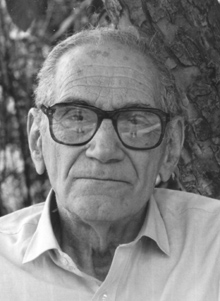
Hans Wallach was a German-American experimental psychologist whose research focused on perception and learning. Although he was trained in the Gestalt psychology tradition, much of his later work explored the adaptability of perceptual systems based on the perceiver's experience, whereas most Gestalt theorists emphasized inherent qualities of stimuli and downplayed the role of experience. Wallach's studies of achromatic surface color laid the groundwork for subsequent theories of lightness constancy, and his work on sound localization elucidated the perceptual processing that underlies stereophonic sound. He was a member of the National Academy of Sciences, a Guggenheim Fellow, and recipient of the Howard Crosby Warren Medal of the Society of Experimental Psychologists.
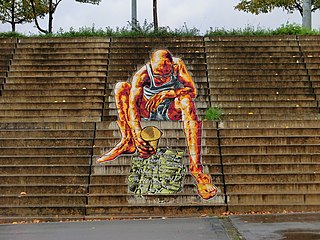
An accidental viewpoint is a singular position from which an image can be perceived, creating either an ambiguous image or an illusion. The image perceived at this angle is viewpoint-specific, meaning it cannot be perceived at any other position, known as generic or non-accidental viewpoints. These view-specific angles are involved in object recognition. In its uses in art and other visual illusions, the accidental viewpoint creates the perception of depth often on a two-dimensional surface with the assistance of monocular cues.














